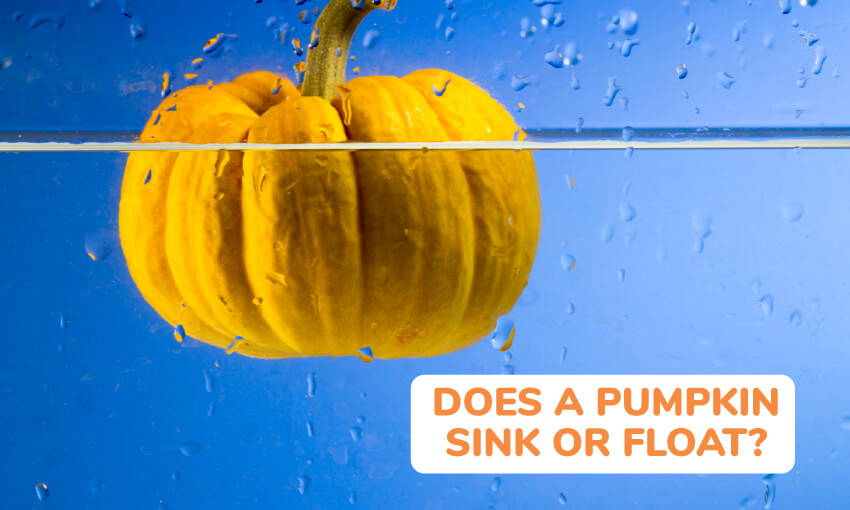Does A Pumpkin Float Or Sink
A pumpkin is one of the most recognizable symbols of the Fall season. We see it everywhere from front porches to grocery stores. However, have you ever wondered if a pumpkin floats or sinks? This common question is something that many people have asked, and the answer may surprise you.
Pain Points
As Halloween approaches, many people are thinking about decorating their pumpkins. One part of this process may involve placing the pumpkin in water. However, without knowing whether the pumpkin will float or sink, it can be challenging to plan the perfect decoration. Additionally, schools and science classes often perform experiments to determine whether pumpkins float or sink. Without a clear answer, these experiments may not be as impactful as they could be.
Does a Pumpkin Float or Sink?
The answer is that it depends. A fresh, uncarved pumpkin will typically sink in water. However, if the pumpkin has started to rot or has been carved, it has a higher chance of floating. Additionally, pumpkins that have a higher density will sink while those that are less dense will float. Overall, it can be challenging to determine whether a pumpkin will float or sink with 100% accuracy without knowing its density and state.
Summary of Main Points
In summary, whether a pumpkin floats or sinks depends on its density and state. Fresh, uncarved pumpkins typically sink, while those that are rotted or have cuts may float. This information can be useful for planning pumpkin decorations or performing science experiments. However, it may be challenging to determine the outcome without further information about the pumpkin.
Personal Experience
I remember carving a pumpkin for the first time as a child and being excited to see it float in the nearby pond. To my surprise, it sank almost instantly. This experience taught me that there's more to pumpkins than meets the eye. While they may look bulky and solid, their density can significantly impact their buoyancy.
Predicting Pumpkin Float or Sink
As mentioned earlier, a pumpkin's density plays a significant role in whether it floats or sinks. A pumpkin's density is determined by its size and the air pockets within it. A larger pumpkin with fewer air pockets will sink, whereas a smaller pumpkin with more air pockets will float. This means that if you want to predict whether your pumpkin will float or sink, you should consider the size and weight of the pumpkin and try to determine how many air pockets it has.
Density and Buoyancy
The concept of buoyancy can be hard to grasp, but it's essential to understanding why some pumpkins float while others sink. Buoyancy is the force that acts upward on an object submerged in a fluid. This force is equal to the weight of the water displaced by the object. In other words, if an object's weight is less than the weight of the water it displaces, it will float. On the other hand, if an object's weight is greater than the weight of the water displaced, it will sink. This concept applies to pumpkins, where their density determines how much water they displace and whether they float or sink.
Pumpkin Density Experiment
To determine whether your pumpkin will float or sink, you can perform a simple experiment. Fill a large bucket or container with water and weigh your pumpkin. Slowly place the pumpkin in the water and observe whether it floats or sinks. If it sinks, try removing some of the pumpkin's material to create more air pockets, and test it again. Keep adjusting until you find the perfect balance that allows your pumpkin to float.
Question and Answer
Q1: Can a carved pumpkin float?
A: Yes, a carved pumpkin has a higher chance of floating than a fresh, uncarved pumpkin. This is because carving creates more air pockets within the pumpkin.
Q2: Why do some pumpkins float while others sink?
A: Pumpkins float or sink based on their density. A pumpkin's density is determined by its size and the number of air pockets inside it.
Q3: Can a large, dense pumpkin float?
A: It's less likely for a large, dense pumpkin to float since the weight of the pumpkin is higher than the weight of the water it displaces.
Q4: Is there a scientific reason behind the density of pumpkins?
A: Yes, the density of pumpkins is due to the number of air pockets within them and their size. As a pumpkin grows, the number of air pockets inside it decreases, causing its density to increase.
Conclusion
Whether a pumpkin floats or sinks can be an essential question when planning Fall decorations or performing science experiments. By understanding the physics behind buoyancy and density, we can predict whether a pumpkin will float or sink. It's a fascinating concept that highlights the importance of observation and experimentation in science.
Gallery
Does A Pumpkin Float? | Pumpkin, Sink Or Float, Cool Science Experiments

Photo Credit by: bing.com /
Do Pumpkins Sink Or Float - Scary Halloween Pumpkin Science

Photo Credit by: bing.com / pumpkins sink float halloween
Do Pumpkins Float? Do Other Fruits And Veggies Float?
Photo Credit by: bing.com / float pumpkins sink fruits veggies other experiment several different choose jdaniel4smom
Fall Activities And Games For Kids (Pumpkin Games) Kid Activities

Photo Credit by: bing.com / pumpkin kids float water games fall sink does activities theme aquarium container weather clear fill storage if
Mrs. Wood's Kindergarten Class: Do Pumpkins Sink Or Float?

Photo Credit by: bing.com / float sink kindergarten pumpkins mrs class wood